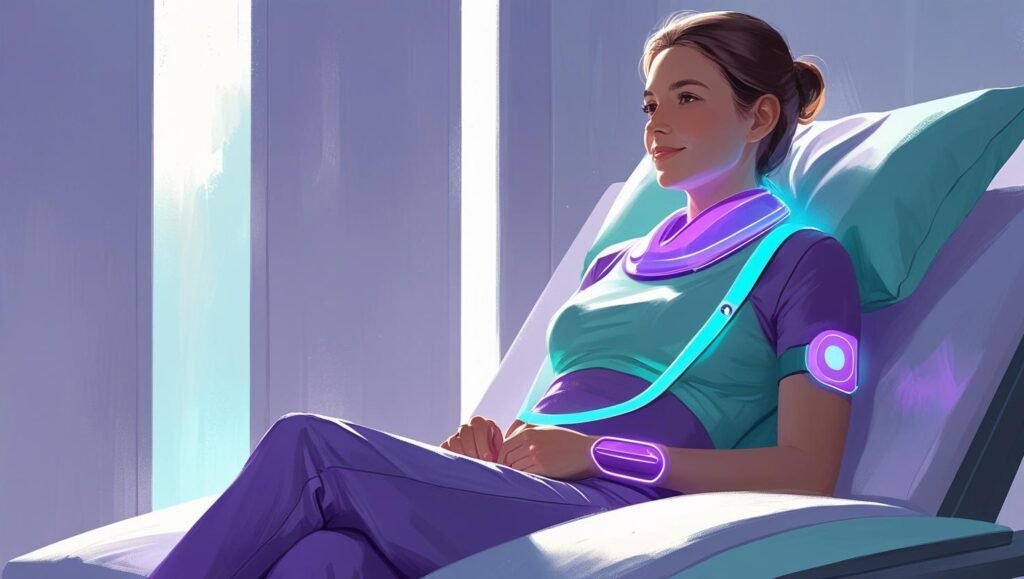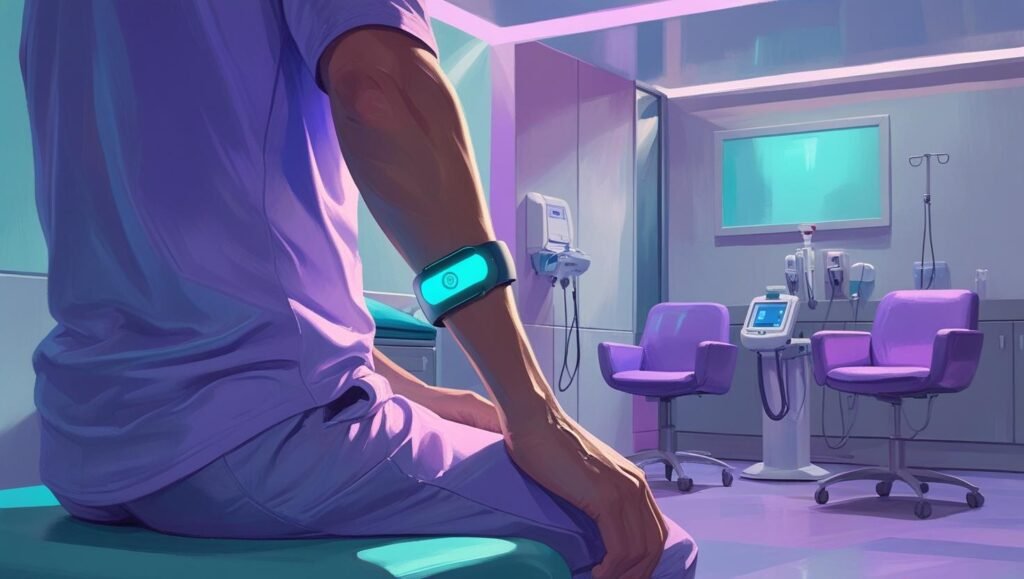Healthcare IoT: Revolutionizing Patient Care Now

Picture a world where your health is monitored 24/7, and your doctor gets a heads-up before you even feel sick. That’s what Healthcare IoT is all about. It’s transforming patient care by connecting devices to create smarter, faster, and more caring healthcare. From fitness trackers to high-tech hospital tools, Healthcare IoT is here to make lives better. Let’s explore how it’s changing the game and what it means for you.
Understanding Healthcare IoT
Healthcare IoT stands for the Internet of Things in healthcare. It’s a network of devices—like smartwatches, hospital monitors, or even pill dispensers—that connect to the internet to share health data. These devices help doctors, patients, and caregivers stay informed and act quickly.
It’s not just about cool tech. Healthcare IoT builds a system where devices work together to improve care. For instance, a heart monitor can warn a nurse if a patient’s condition changes, ensuring help arrives fast.
Why Does It Matter?
Healthcare IoT is a big deal because it:
- Spots health problems early, saving lives.
- Lets patients manage their health from home.
- Makes treatments fit each person’s unique needs.
- Saves money by preventing costly hospital stays.
This technology is empowering patients and healthcare workers alike, from busy city hospitals to small rural clinics.
How Healthcare IoT Is Changing Lives
Healthcare IoT isn’t just a buzzword—it’s solving real problems and making patient care more human. Let’s look at the ways it’s shaking things up.
Keeping Tabs on Health Remotely
Remote monitoring is one of the biggest gifts of Healthcare IoT. People with conditions like asthma or hypertension can use wearable devices to track their health without leaving home. These gadgets send updates to doctors instantly.
Take someone with asthma. A smart inhaler can track usage and warn if symptoms are worsening, helping avoid a trip to the ER. This gives patients freedom and confidence to live their lives.
High-Tech Hospitals
Hospitals are getting a major boost from Healthcare IoT. Smart thermometers adjust room conditions for comfort, while connected infusion pumps ensure medicines are delivered perfectly. These tools let staff focus on what matters: caring for patients.
Here’s what IoT brings to hospitals:
- Tracks supplies like oxygen tanks to avoid shortages.
- Monitors equipment to prevent breakdowns.
- Alerts staff when patients need immediate attention.
These upgrades make hospitals safer places for healing.
Tailored Care for Every Patient
Healthcare IoT makes treatments as unique as you are. Devices collect details about your heart rate, sleep patterns, or even stress levels. Doctors use this data to create plans that work for you.
For example, a patient with arthritis might use a smart band to track movement. If the data shows less activity, their doctor could suggest physical therapy or new meds. This personal touch leads to better health and happier patients.
Speeding Up Emergency Care
When emergencies strike, Healthcare IoT saves precious time. Wearables can detect issues like a stroke and call for help automatically. Ambulances equipped with IoT can send vital signs to the hospital before arriving.
This means doctors are ready the moment a patient rolls in. Quick action reduces risks and helps patients recover faster.
Hurdles to Overcome
Healthcare IoT is amazing, but it’s not without challenges. Let’s talk about what needs fixing to make it even better.
Protecting Your Data
Sharing health data raises privacy worries. Hackers could try to access IoT devices, putting sensitive info at risk. Strong protections, like secure networks and encryption, are a must to keep data safe.
Patients also want to know their information is handled with care. Open communication builds trust in Healthcare IoT systems.
Managing Costs
Rolling out Healthcare IoT can cost a lot upfront. Buying devices, training staff, and setting up systems isn’t cheap. Smaller clinics or remote areas might struggle to afford it.
But in the long run, IoT can save money by keeping patients healthier and out of hospitals. Finding affordable solutions is the next step.
Keeping Tech Reliable
IoT devices need steady internet and power to work. A glitch or outage could interrupt care. Regular checks and backup plans ensure these tools keep running smoothly.

What’s Next for Healthcare IoT
The future of Healthcare IoT is full of promise. New ideas are popping up to make healthcare even smarter.
AI Meets IoT
Pairing artificial intelligence with Healthcare IoT is a match made in heaven. AI can crunch data from devices to find trends. For example, it might notice early signs of an infection and alert doctors to act.
This teamwork helps prevent problems before they start, saving time and lives.
Smarter Wearables
Wearable tech is evolving fast. Imagine earrings that monitor blood pressure or patches that track hydration. These devices will fit seamlessly into your life, making health checks a breeze.
Reaching More People
As prices drop, Healthcare IoT will spread to more places. Remote villages and underserved areas could get connected clinics or wearable devices. This could make quality care available to everyone, everywhere.
A Real-Life Example
Meet James, a 65-year-old with diabetes. He uses a smart glucose monitor that tracks his blood sugar and shares it with his doctor. One night, the device notices a dangerous drop and sends an alert. His doctor calls, guides him to eat a snack, and avoids a hospital trip.
James’s story shows how Healthcare IoT is helping real people today. It’s about giving you control and peace of mind.
Quick Look at the Benefits
Here’s a table breaking down why Healthcare IoT rocks:
| Advantage | What It Does |
|---|---|
| Early Warnings | Catches issues before they get bad. |
| Home Monitoring | Lets patients stay safe at home. |
| Custom Treatments | Makes care fit each person perfectly. |
| Lower Costs | Cuts down on hospital visits. |
| Quick Emergency Help | Gets care to patients faster. |
Wrapping It Up
Healthcare IoT is reshaping patient care in incredible ways. It’s making hospitals smarter, treatments more personal, and emergencies less scary. Sure, there are challenges like data privacy and costs, but the future is bright with AI and new tech on the way. Whether you’re managing a health condition or working in healthcare, Healthcare IoT is here to help. Let’s look forward to a healthier, connected world!
FAQs
What does Healthcare IoT do?
It connects devices like wearables and hospital tools to share health data, improving care and efficiency.
Is my data safe with Healthcare IoT?
With strong security like encryption, it can be safe. Companies must prioritize protecting your info.
Can anyone use Healthcare IoT?
Yes! It helps patients with chronic illnesses, hospitals, and even healthy people tracking their wellness.
Will Healthcare IoT take over doctors’ jobs?
No way—it supports doctors with data but can’t replace their expertise and human touch.
Read more: IoT Security Risks: 7 Critical Threats You Must Secure Immediately – IoT Insights Hub




